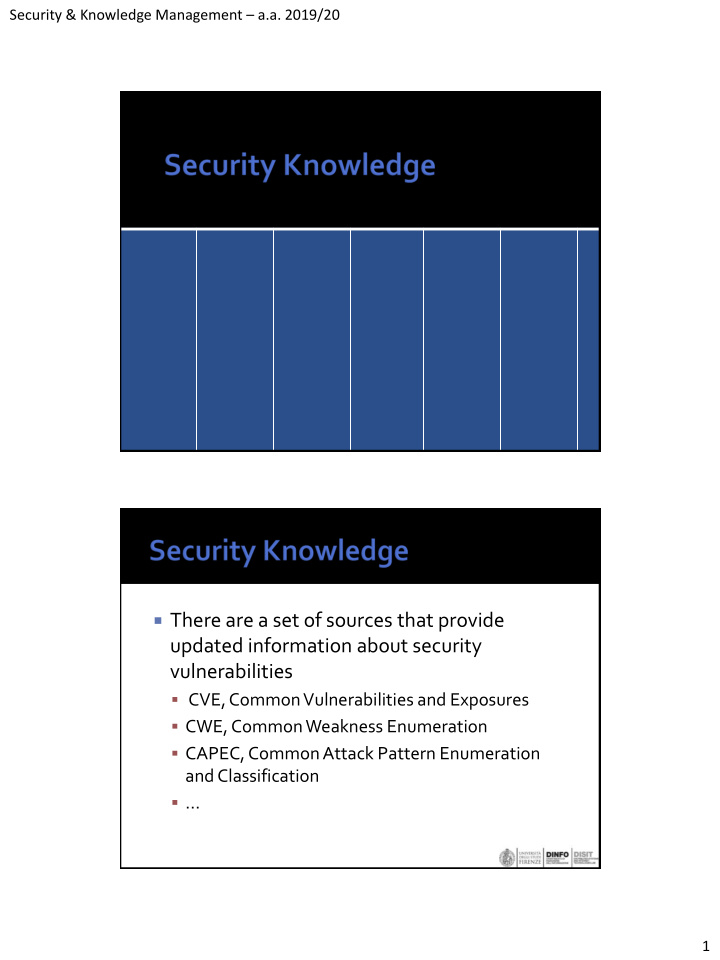



Security & Knowledge Management – a.a. 2019/20 There are a set of sources that provide updated information about security vulnerabilities CVE, Common Vulnerabilities and Exposures CWE, Common Weakness Enumeration CAPEC, Common Attack Pattern Enumeration and Classification ... 1
Security & Knowledge Management – a.a. 2019/20 CVE is a list of entries — each containing an identification number, a description, and at least one public reference — for publicly known cybersecurity vulnerabilities . CVE Entries are used in numerous cybersecurity products and services from around the world, including the U.S. National Vulnerability Database (NVD). 2
Security & Knowledge Management – a.a. 2019/20 CWE is a community-developed list of common software security weaknesses. It serves as a common language, a measuring stick for software security tools, and as a baseline for weakness identification, mitigation, and prevention efforts. 3
Security & Knowledge Management – a.a. 2019/20 4
Security & Knowledge Management – a.a. 2019/20 CAPEC helps by providing a comprehensive dictionary of known patterns of attack employed by adversaries to exploit known weaknesses in cyber-enabled capabilities. Understanding how the adversary operates is essential to effective cyber security. It can be used by analysts, developers, testers, and educators to advance community understanding and enhance defenses. 5
Security & Knowledge Management – a.a. 2019/20 Collects and classifies the CVE vulnerabilities CVEs are related with CWEs and with the products (CPE) Metrics are defined to measure the vulnerability dangerousness, each vulnerability is classified in different aspects, see CVSS calculators https://nvd.nist.gov/vuln-metrics/cvss/v3-calculator provides machine readable JSON data of vulnerabilities description 6
Security & Knowledge Management – a.a. 2019/20 www.cvedetails.com provides an easy to use web interface to CVE vulnerability data. You can browse for vendors, products and versions and view cve entries, vulnerabilities, related to them. You can view statistics about vendors, products and versions of products CVE vulnerability data are taken from National Vulnerability Database (NVD) xml feeds provided by NIST. Additional data from several sources like exploits from www.exploit- db.com, vendor statements and additional vendor supplied data, Metasploit modules are also published in addition to NVD CVE data. Vulnerabilities are classified by cvedetails.com using keyword matching and cwe numbers if possible, but they are mostly based on keywords. Unless otherwise stated CVSS scores listed on this site are "CVSS Base Scores" provided in NVD feeds. Vulnerability data are updated daily using NVD feeds. 7
Security & Knowledge Management – a.a. 2019/20 Which are the security measures to be taken when handling payments? credit cards information are a very sensitive personal data There are some guidelines to be followed For example on OWASP https://www.owasp.org/images/f/f7/Security_of_P ayment_cards.doc https://cheatsheetseries.owasp.org/cheatsheets/T ransaction_Authorization_Cheat_Sheet.html 8
Recommend
More recommend